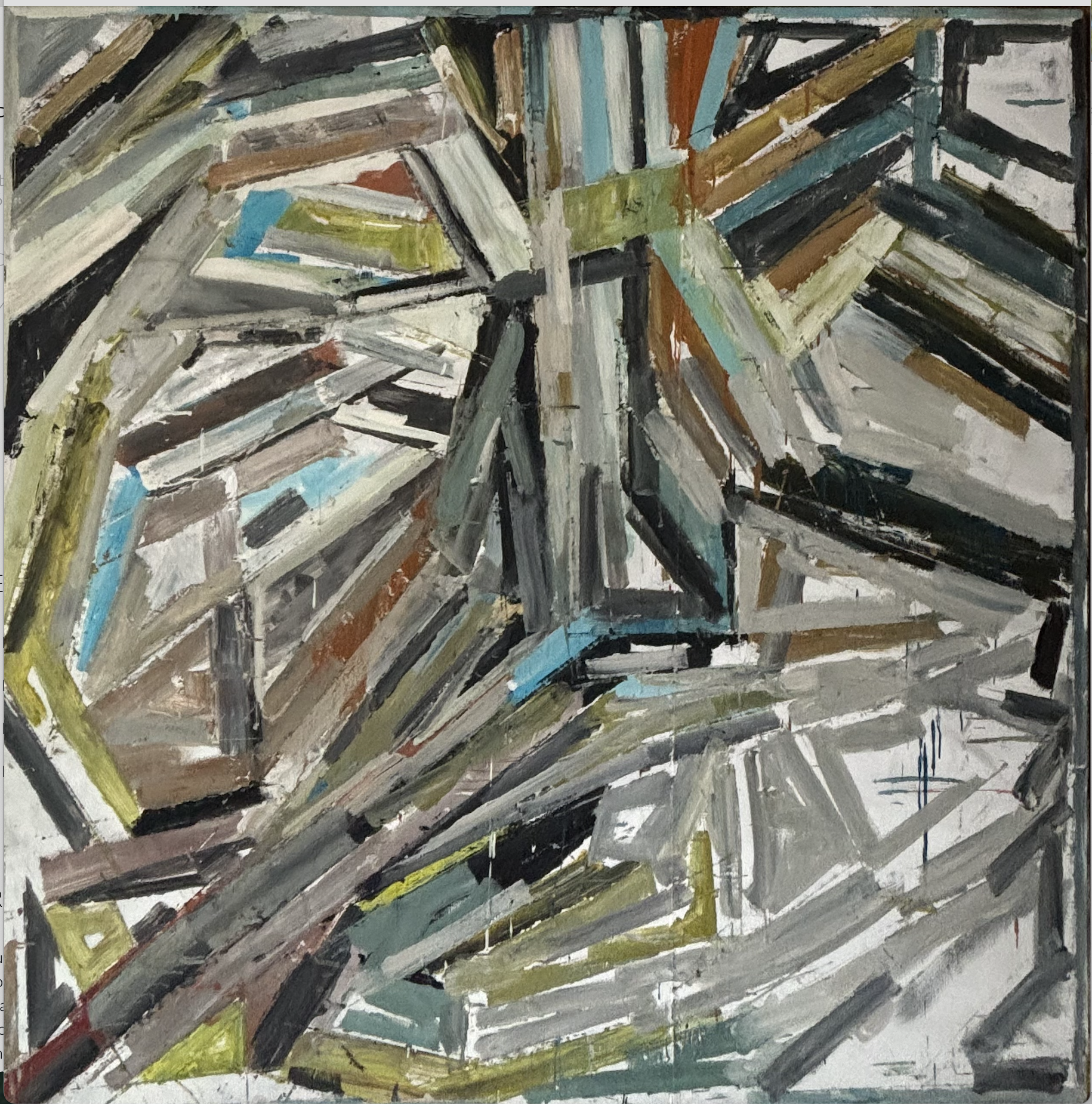Jean Pierre PinceminSans titre
1985
Oil on canvas
77.17 x 77.17 in ( 196 x 196 cm )ZoomInquiry - Sans titre, 1985
Provenance
Galerie de France, Paris
Private Collection, Switzerland
René Feurer Collection, Switzerland
Private Collection, France
Artwork's description
This painting by Jean-Pierre Pincemin, created in 1985, reflects the artist's evolution towards more structured and introspective compositions, marked by his interest in materials and texture. In this work, we observe the layering of color, often muted, creating an atmosphere that is both mysterious and contemplative. Pincemin, stemming from the Supports/Surfaces movement, distinguishes himself here through an abstract yet controlled exploration, playing with geometric shapes and the depth of color planes.
The lines and angles present might evoke architectural elements, reinforcing the impression of rigor and solidity, while also offering a certain visual poetry through the nuances and slight transparency of the layers. The textured surface draws the eye and suggests an almost tactile temporality, recalling how Pincemin often incorporated raw elements and a certain materiality into his works. Through this subtle interplay between abstraction and structure, the artist manages to balance the spontaneity of gesture with formal mastery, inviting the viewer to a deep contemplation
Artist's biography
Jean-Pierre Pincemin, born in 1944, began his professional career as a mechanic in a factory. His revelation for painting occurred during his first visit to the Louvre. "My great affair with painting is to love painting, not to know how to paint, to invent ways to paint and quite quickly, to be able to identify with Western painting." At the age of 23, he decided to devote himself entirely to painting, permanently leaving his job as a turner. His training was driven by passion and a deep desire to create.
After a period as an art critic, Pincemin created his first paintings and sculptures, holding his first exhibition in 1968. His works, distant from traditional methods, incorporated innovative techniques such as folds and imprints of bricks or mesh, transforming the canvas into a new material of expression.
From 1968 to 1973, Pincemin developed a series of works known as "glued squares." For these works, he first immersed the canvas in a bath of paint, then cut and assembled it into irregular geometric shapes, squares, or rectangles.
In 1971, he joined the Supports/Surfaces movement, an artistic group founded in the late 1960s. This movement, initiated by Matisse with his cut-outs, was characterized by new abstraction and hard edge, influencing both the United States and France with artists like Simon Hantaï and Claude Viallat. The focus was on the physical reality of the painting.
In the late 1990s, Jean-Pierre Pincemin decided to renew his artistic approach, exploring and assimilating all styles, supports, techniques, and genres. Despite being affected by arthritis, he created polychrome sculptures representing an assembly of painted and stapled pieces of wood. His themes of inspiration included trees, religious subjects, genre scenes, sometimes erotic, and portraits.
Recognized for his technical audacity, Pincemin experimented with various materials, mixing oil with or without tar and using other personal mixtures. His works unfolded on various supports such as canvas, paper, and photographic posters, affirming his status as a pioneer in the contemporary art world.
